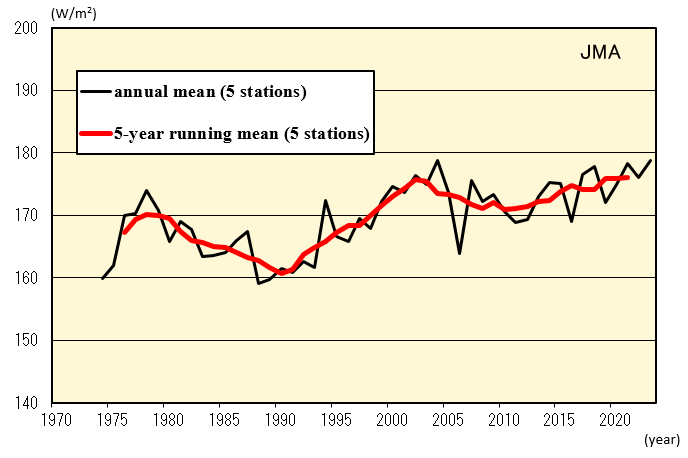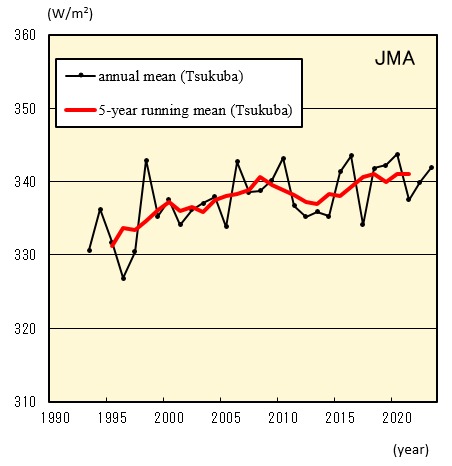Reports indicate that global solar radiation decreased from around 1960 to the late 1980s before increasing rapidly from the late 1980s to around 2000, and no obvious changes have been observed in most regions of the world (Ohmura A., 2009). In Japan, global solar radiation declined from the late 1970s to around 1990 before increasing from around 1990 to the early 2000s. Since then, data from measurements at the five observation stations show no obvious changes. These long-term variations are consistent with those reported globally.

Time-series representations of annual and five-year-running means of global solar radiation at five stations in Japan (Abashiri, Tsukuba, Fukuoka, Ishigakijima and Minamitorishima)
Annual means are based only on monthly mean calculation from more 20 daily datasets. Before March 2010 (before February 2021 at Abashiri and before December 1987 at Tsukuba), observation was global pyranometer-based, while values have since been derived from the sum of direct and diffused pyranometer observations.
Downward infrared radiation has been monitored since the early 1990s at Tsukuba. Analysis of the data obtained shows an increasing trend at a rate of about 0.3 W/m2 per year during the period from 1993 to 2023. This is consistent with the trend seen in the results of analysis using data from 20 BSRN stations worldwide (+0.3 W/m2 per year during the period from 1992 to 2009) (WCRP, 2010).

Time-series representations of annual and five-year-running means of downward infrared radiation at Tsukuba